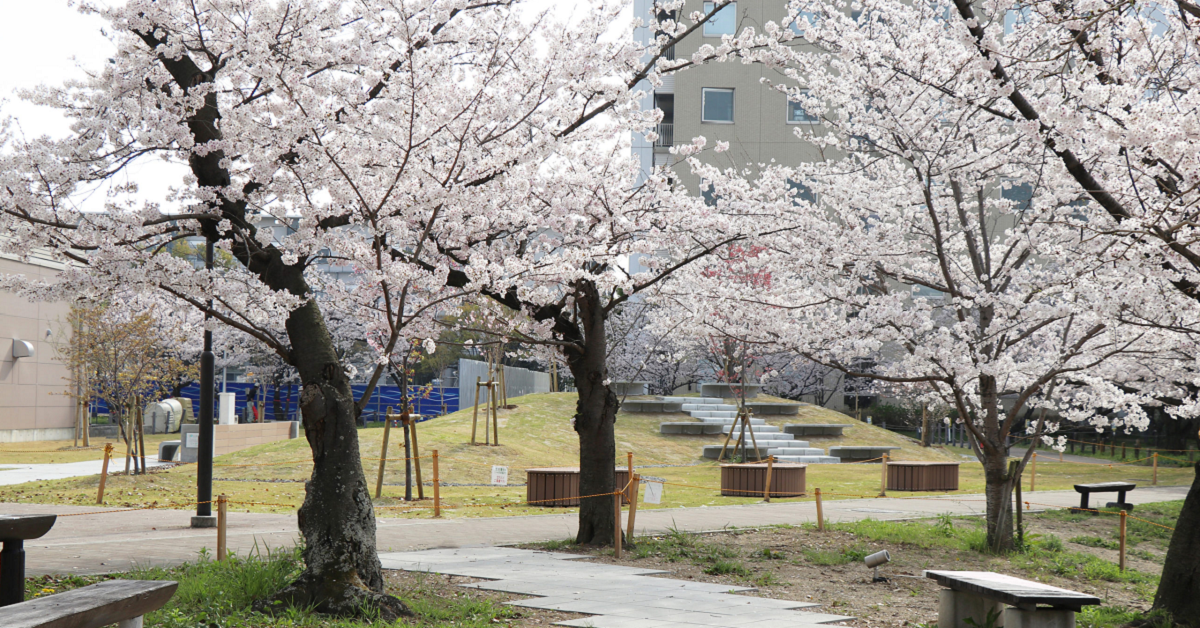Through KOKUHO, the Nakamozu Campus reaffirmed its identity as a place where art and education meet.
Blending historical architecture with cinematic expression, it stands as a modern treasure—an enduring KOKUHO in itself.
Why the Nakamozu Campus Was Chosen
The Nakamozu Campus embodies a perfect balance between academic solemnity and architectural artistry. Built during the early Showa era, its timeless design still captivates visitors today. The selection of this location for KOKUHO reflects the film’s core themes of “preserving tradition while embracing innovation.”
| Feature | Description |
|---|---|
| Architectural Style | A fusion of early Showa modernism and academic architecture |
| Location | About a 5-minute walk from Nakamozu Station, offering easy access |
| Scene Usage | Lobby and lounge scenes of the Kabukiza Theater |
| Additional Filming Site | Combined with Biwako Otsu-kan to depict the fictional “Hinomoto-za” |
The building’s calm atmosphere and elegant shadows deepened the film’s emotional tone. The director remarked, “The quiet spirit of this place itself supported the performance.”
The Grand Atmosphere Created by the Auditorium
The campus auditorium, a long-standing symbol of learning, blends warm wood textures with the cool solidity of stone, offering a space where “education and art coexist.” During filming, the hall’s lofty ceilings and natural light reflections were used to express the grandeur of the theater world.
| Filming Technique | Artistic Purpose |
|---|---|
| Use of Natural Light | Symbolized character emotions and the passage of time |
| Gentle Lighting | Recreated the tranquil atmosphere of the Kabukiza’s lounge |
| Wooden Texture | Conveyed both warmth and solemnity |
| Floor Reflections | Enhanced the visual motion of the actors’ performances |
Students and faculty actively assisted with filming, creating a space that has since been remembered as “a place where reality and storytelling overlap.”
The Dual Setting That Formed “Hinomoto-za”
In KOKUHO, the symbolic “Hinomoto-za” theater was constructed by merging two real-world locations: Osaka Prefecture University Nakamozu Campus and Biwako Otsu-kan. This creative combination allowed filmmakers to produce a fictional yet convincingly real theater.
| Filming Location | Scene Depicted | Distinctive Features |
|---|---|---|
| Nakamozu Campus | Lobby and rest area scenes | Calm and academic atmosphere |
| Biwako Otsu-kan | Stage and audience scenes | Historical Western-style elegance |
| CG Lighting Design | Connected both settings seamlessly | Blended realism with imagination |
Through consistent lighting and camera alignment, the filmmakers eliminated any visual boundary between the two sites. The director described the theater as “a symbol connecting Japan’s tradition and modernity.”
Filming Atmosphere and On-Site Collaboration
Filming began early in the morning, with the campus enveloped in soft light. Students participated as volunteers, supporting tasks such as assisting the crew, guiding extras, and helping with technical setups.
| Collaboration Type | Responsible Group |
|---|---|
| Scene Preparation | Student Volunteers |
| Lighting Assistance | Staff and students jointly |
| On-Campus Security | University Administration |
| Public Relations | University Office and Production Committee |
A staff member shared, “The students’ focus and sincerity gave the set a stronger sense of unity.” The cooperation between the university and film crew demonstrated how an educational space can harmoniously transform into a cinematic production site.
A Stage Where Art and Education Converge
The Nakamozu Campus has since come to represent more than just a filming location—it stands as a cultural and educational landmark. Its preserved architecture, combined with active engagement in creative projects, embodies the spirit of “learning through creation.”
| Perspective | Key Value |
|---|---|
| Architectural Significance | Successful preservation and adaptive reuse of modern architecture |
| Educational Value | Provides students with hands-on learning in film and media |
| Regional Contribution | Promotes tourism and cultural awareness in Sakai City |
| Artistic Importance | Fuses art and academia into a single cultural expression |
After the film’s release, visitors began to tour the campus, drawn by its cinematic legacy. The university, recognizing this renewed interest, began hosting cultural events and public lectures, strengthening its connection with the local community.
Students, too, discovered new meaning in how education and society intertwine. Through the film, they realized that “a place of study can also be a source of art and cultural creation.”
Conclusion
The Osaka Prefecture University Nakamozu Campus played a pivotal role in KOKUHO, serving as the Kabukiza Theater’s lobby and lounge. In combination with Biwako Otsu-kan, it brought the fictional “Hinomoto-za” to life—an imagined theater that left a lasting impression on audiences.
This collaboration proved that “an academic institution can also serve as a pillar of culture.” The harmony of architecture, light, and human creativity breathed life into the story, making the campus itself a symbol of living heritage.
Even today, visitors come to experience its quiet dignity and cinematic atmosphere. As both an educational site and a cultural sanctuary, the Nakamozu Campus stands as a true modern treasure—an embodiment of KOKUHO in reality.






